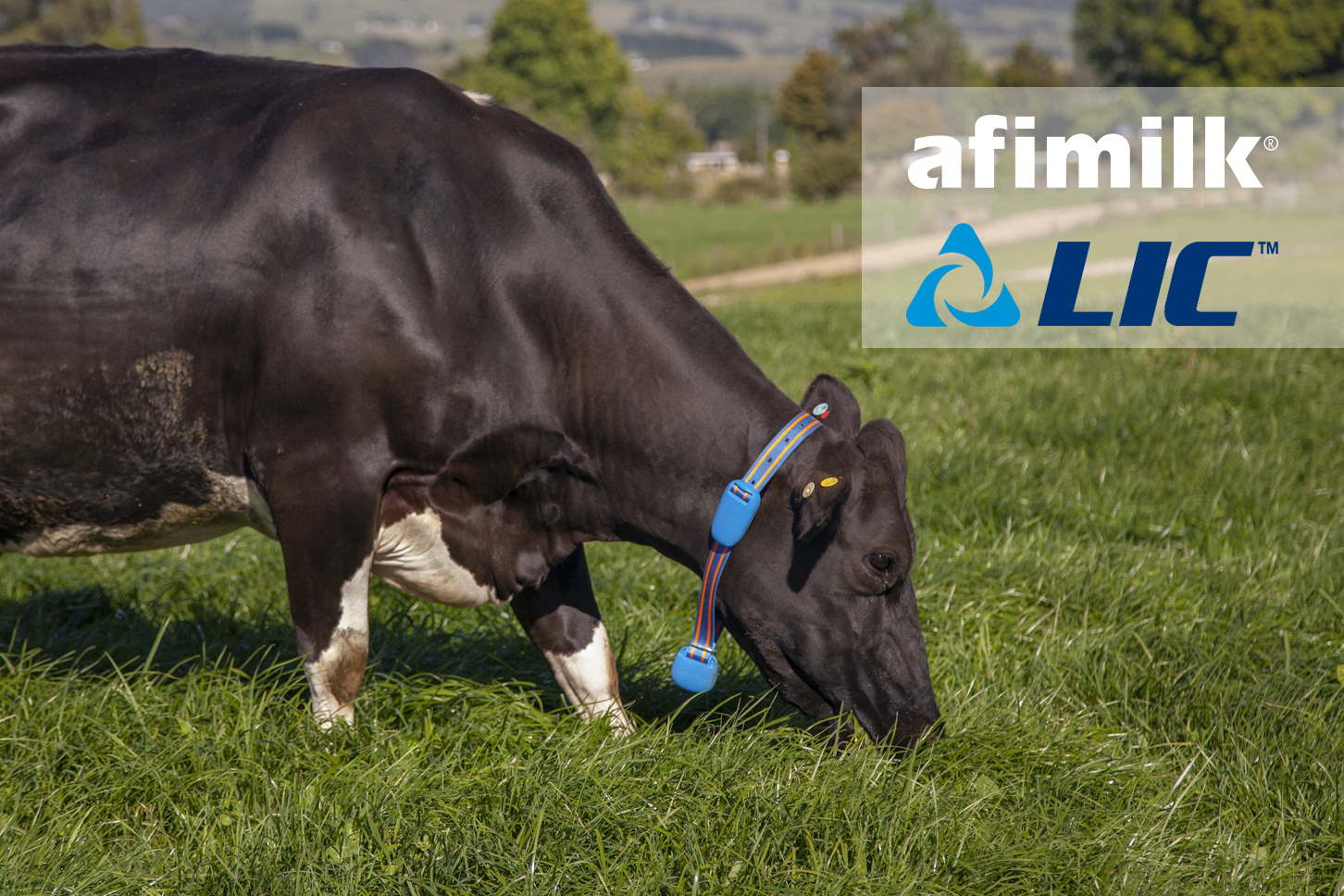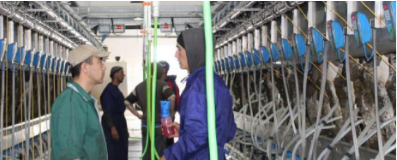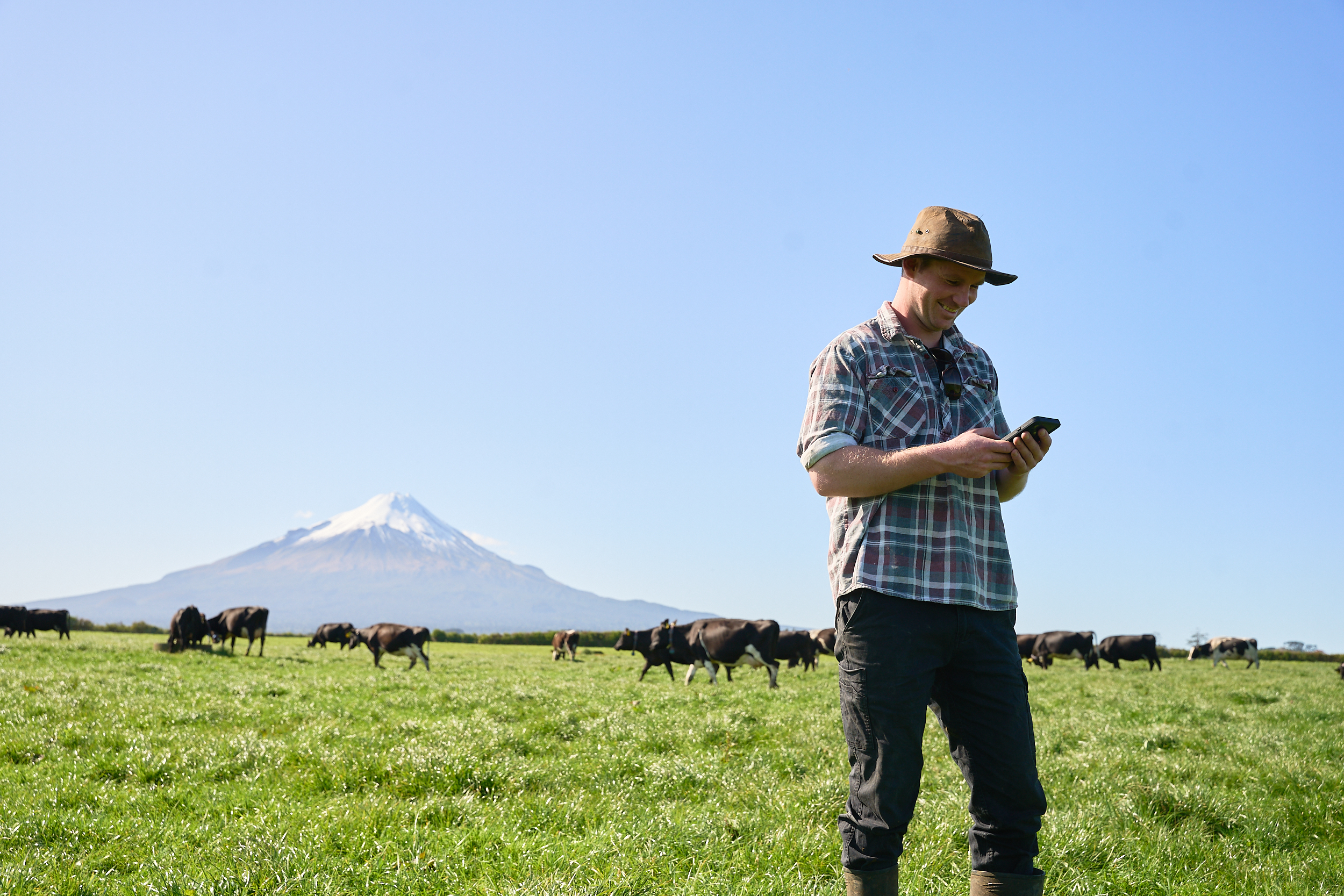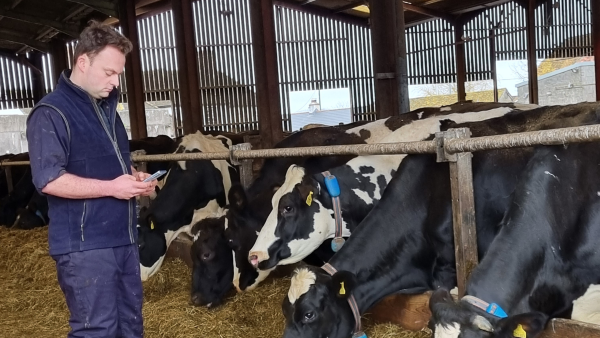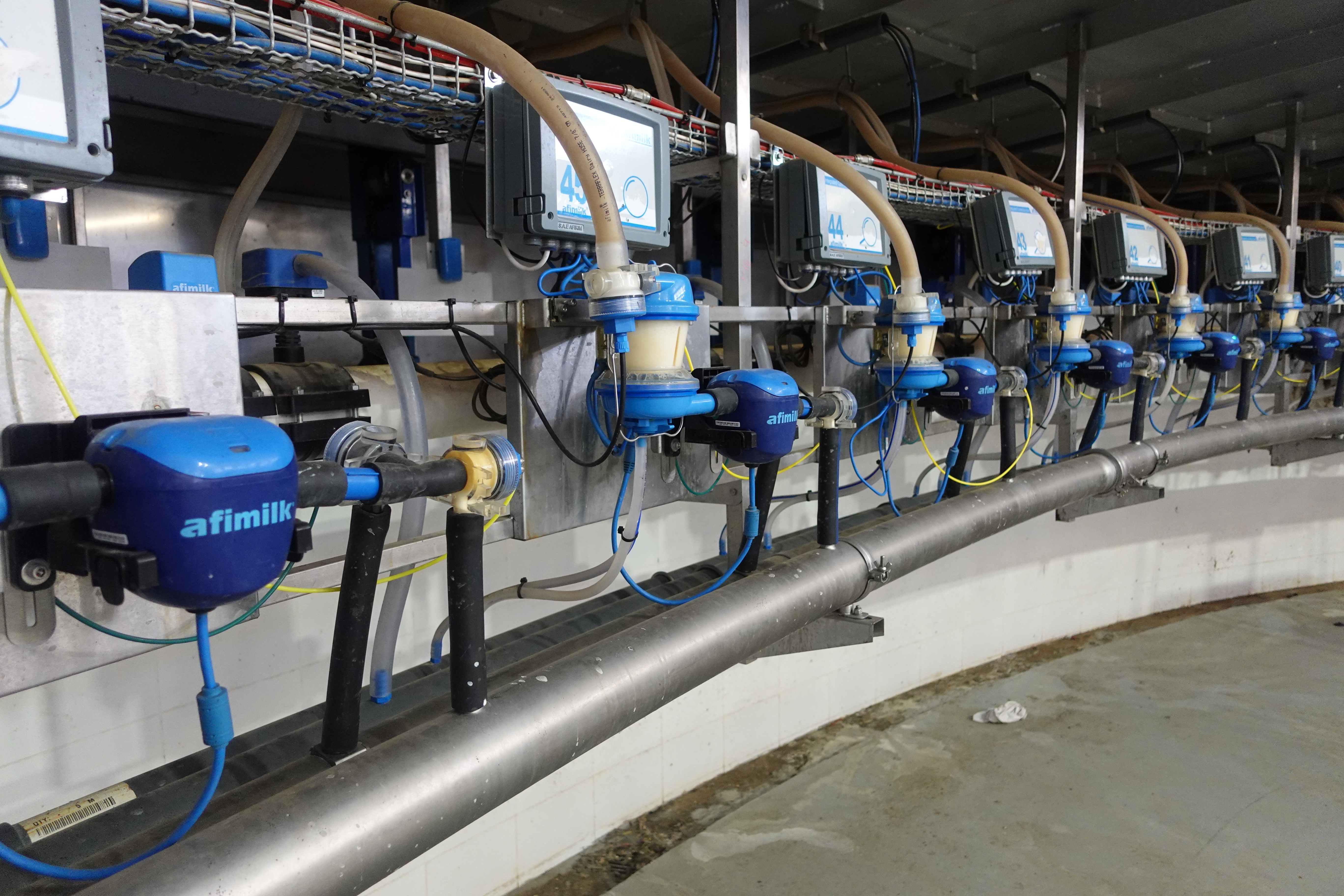By Eliezer Aizinbud, D.V.M, Ph.D.
In Israel Oded Markusfeld – Nir, the former chief veterinarian of Israel Cattle Breeder Association and the developer of “Herd Health” in this country, made a major contribution by making both the veterinarians and the farmers aware of the importance of BCS by turning it into an instrument used in monitoring and causal analysis of production and fertility carried out routinely on the majority of herds in the country. In 1997 he and coworkers examined the effects of BCS at drying off and after calving on the performance and health of 2162 Israeli Holstein cows in eight commercial herds. Multiparous cows that were under conditioned at calving exhibited more postparturient uterine diseases. The risk of retained placenta was greater for cows that were under conditioned at drying off, whereas cows that lost more body condition during the dry period suffered more from both, retained placenta and metritis, and from inactive ovaries; they were more likely to be open 150 days after calving in the next lactation. Considerable loss of body condition after calving decreased the likelihood of conception.
Oded defined the goals of BCS for Israeli – Holstein cows at various stages of lactation and dry period. Since the early nineties trained veterinarians check routinely in this country the BCS of dairy cows at 5 -12 DIM, at 40-60 DIM and at 7 – 14 days before drying off. Optimum BCS at calving, as well near to drying off, is 3- 3.75 units. The percent of cows in the herd with BCS less than 3 units or more than 4 units at calving should not exceed 15%. The loss of body condition from the first to the second BCS after calving (towards insemination) should not exceed 0.5 units. During the dry period the percent of cows in the herd with loss of more than 0.5 or addition of 0.25 units should not exceed 15%.
The wide computerized dairy farming in Israel helps to provide better records and interpretation of BCS data. This enables making important decisions regarding the future feeding, breeding and health.
The experience of the farmers of kibbutz Gesher (a dairy of 276 cows) can be a useful example of this practice. …The visiting vet examines and scores a cow No. 4721 at 58 DIM and tells the Gesher farm’s manager Pinhas Gur staying hereby: “The BCS of this cow I estimate to be 3.25 units”. Pinhas records this result in a hand-held terminal which enables the entries of BCS data, and other information, on the spot. Later Pinhas downloads the data into the PC, directly into the “AfiFarm” program of the “Afimilk” system. Then he found in the system’s database the previous BCS of the specific cow recorded at 8 DIM. It was 3.5 units. Therefore the loss of body condition in this cow after calving was only 0.25 unit of BCS. This result makes her a good candidate for insemination. Pinhas decided to have this cow inseminated during the first estrus after 60 DIM. The insemination took place at 72 DIM and was successful. The change in body condition of cow No.4721 after calving, the timing of her estruses (according to the peaks of walking activity monitored by the pedometer), and the actual timing of chosen insemination is also graphically presented by the system. In the graph below, the cow was inseminated at the 3rd Estrus at 72 DIM. The cow does not display any high activity following the 1st insemination at 72 DIM and was declared pregnant by the local veterinarian (PD+). The peaks in activity are clear on the graph at Estrus.
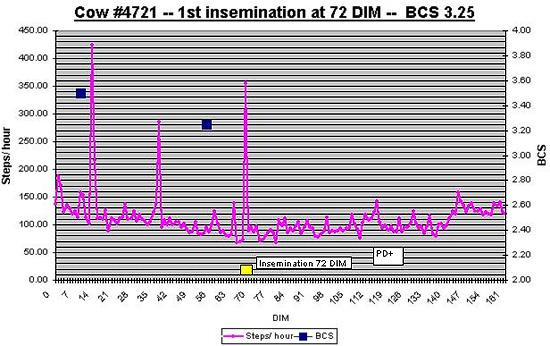
In another cow, No.71, the loss of body condition after calving was considerably higher, it declined from 3.5 to 2.5 units of BCS, and Pinhas decided to delay her insemination. The insemination took place at 104 DIM and was successful. In the graph below, we clearly see 3 recorded heats previous to the insemination at 104 DIM.
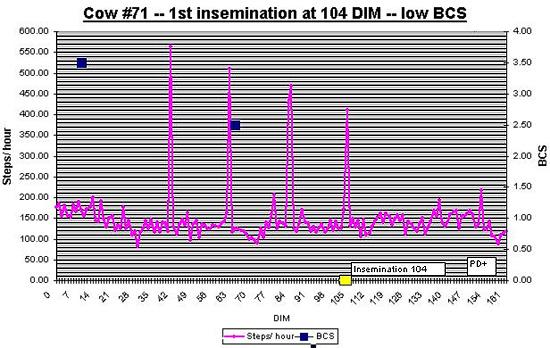
Choosing the proper timing for drying off a specific cow, Pinhas takes in consideration the BCS. He gives additional dry days to cows with low BCS (3 units and lower). For that purpose he created a separate Trigger for those cows. Than he drags and drops that Trigger to the ‘Expected dry date folder” and changes the “pregnancy days for dry” to 208 days to give them a dry period of 67 days. The dry period of ‘regular’ cows with optimal BCS at drying off lasts as usually 60 days.
In some Israel dairies dry cows are grouped according to the BCS in two groups to improve energy intake of cows with low body conditions.
Richard L. Wallace who wrote in this Magazine on the subject of BCS is perfectly correct when he said: “Second only to heat detection, body condition scoring may offer more return on investment than any other practice. And it involves a smaller routine time commitment than heat detection”
The author is a professor of the Institute of animal Science, Volcani Center, Bet Dagan, Israel

